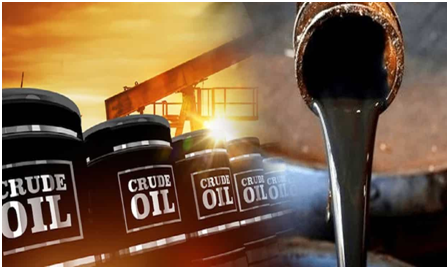
The
world’s third largest energy consumer imported 21.4 million tonnes (mt) of
crude oil last month, a growth of 3 per cent M-o-M and 7 per cent Y-o-Y. Inbound
shipments of the critical commodity rose for the third consecutive month during
April, according to Petroleum Planning & Analysis Cell (PPAC) data.
Analysts
and trade sources attribute the higher numbers to more export volumes being
shipped out of Russia and Chinese refiners lifting of lower cargoes, which
increased Russia’s share in total imports to 40 per cent from roughly 30 per
cent in March 2024.
According
to energy intelligence firm Vortexa, India imported more than 1.72 mb/d crude
oil from Russia in April, the highest amount in the last nine months. Private refiners, Reliance Industries
(RIL) and Rosneft-backed Nayara Energy, imported around 770,000 barrels per day
(b/d) of crude oil from Russia in April 2024, the highest in a year. Sensing
the opportunity to procure more barrels, public refiners such as Indian Oil
Corporation (IoC), Bharat Petroleum Corporation (BPCL), and Hindustan Petroleum
Corporation (HPCL) too imported 1.02 million barrels per day (mb/d) last month,
which is a seven-month high.
Brent
crude oil prices averaged $90.15 per barrel in April 2024, up from against
$85.48 in March 2024 and $84.94 a year ago. The Indian basket crude price
averaged at $89.46 a barrel last month, up from $84.49 in March 2024 and $83.76
in April 2023. Consequently, India’s oil import bill rose last month. The net import bill for oil and gas rose
from $10.1 billion in April 2023 to $12.3 billion in April 2024. Crude oil
imports constituted $13 billion, LNG imports $1.1 billion and exports were $3.7
billion in April.
Earlier
this month, state-run Bharat Petroleum Corporation (BPCL) said that Russian
supplies have moderated, compared to FY24. The oil marketing company (OMC) said
that discounts have almost halved to $3-6 per barrel, from an average of $8-10
during FY24.
However,
trade sources noted that the Ukranian drone attacks on Russian refineries are
making more crude oil supplies available for exports. According to the US EIA,
around 14 per cent of Russia’s refining capacity came offline in the first quarter
of 2024.
“This
will make more supplies available for exports to India. In April, more supplies
were available due to drone attacks and lower imports from China. May should
follow suit,” said one of the sources.
Vortexa’s
Head of APAC Analysis, Serena Huang, has said: “Higher Russian
crude exports in February and March as well as lower imports by Chinese
refiners have made available more volumes for Indian refiners. Given that Russian crude cargoes are
likely to be more discounted than Middle East grades, Indian refiners are
likely to opt for the former.”